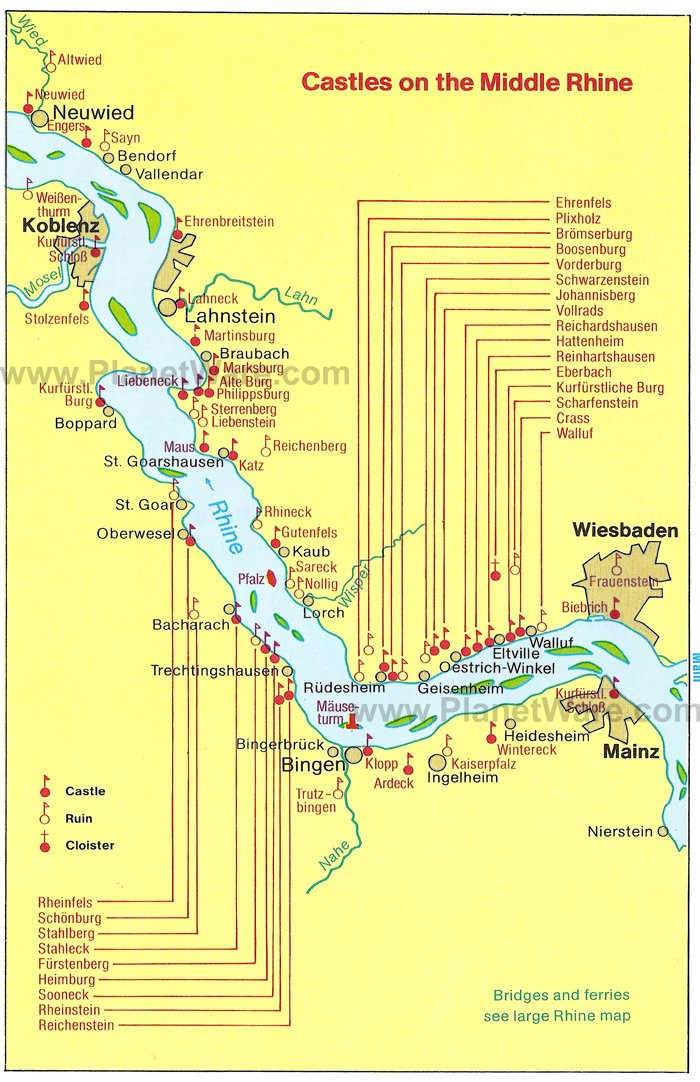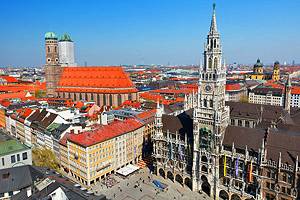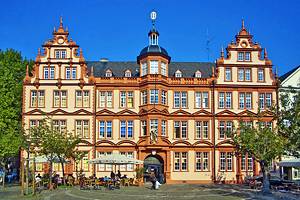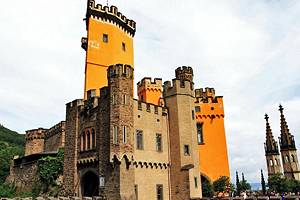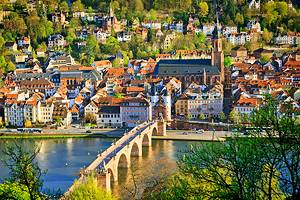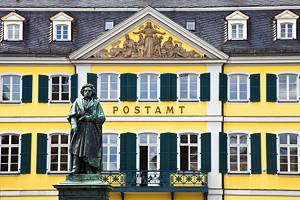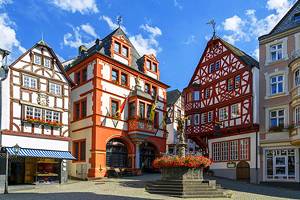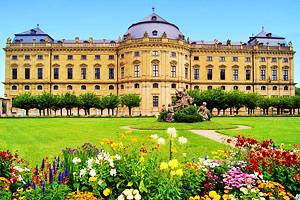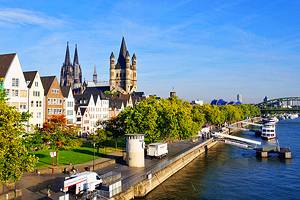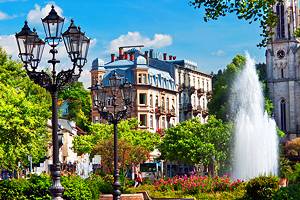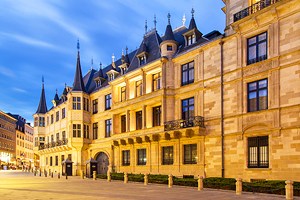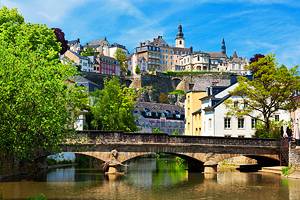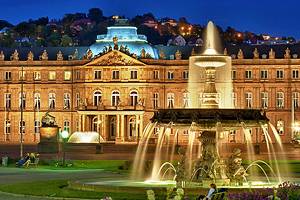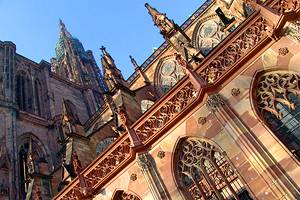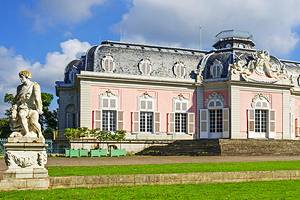Tourist Attractions in the Rhine Valley
The Rhine is not only one of Europe's most beautiful rivers, it's also one of the continent's most important waterways. Flowing some 1,320 kilometers from Switzerland all the way to the Netherlands and the North Sea, this spectacular natural waterway is also one of the most popular river cruising destinations on the planet.
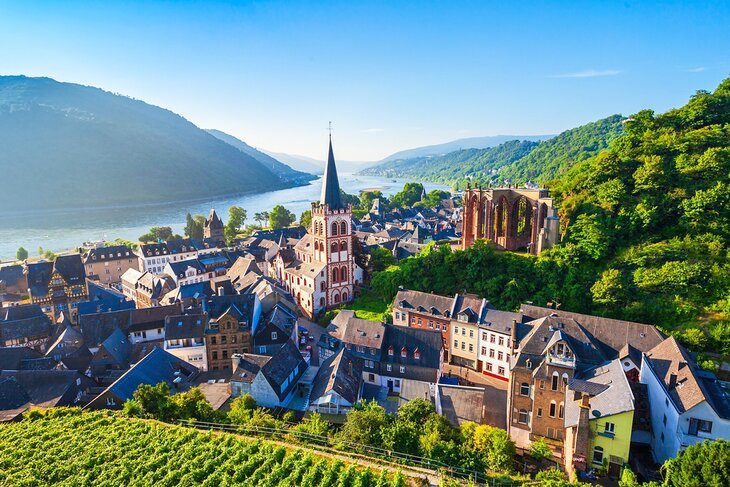
One of the most appealing sections of this mighty river flows through Germany's Middle Rhine Valley (Rheintal), an area of outstanding natural beauty.
In fact, this stretch of river extending from Mannheim in the south to Koblenz in the north boasts scenery so spectacular that a large section, referred to as the Rhine Gorge (Rheinschlucht), has been designated a UNESCO World Heritage Site.
Thanks to its many castles and historic small towns and cities, this stretch of the Rhine has for centuries influenced artists, authors, and composers.
These days, it's as popular among day trippers as it is with those staying for longer visits, with numerous things to do, including opportunities for hiking or cycling adventures along its many long-distance trails and bike routes. Equally fun is hopping aboard a riverboat for a day-long or extended river excursion.
However you plan to travel, explore this scenic region of Germany with our list of the best places to visit and top tourist attractions in the magnificent Rhine Valley.
- Experience the Rhine Gorge
- Take a Slow Boat along the Rhine
- Visit the Many Museums of Mainz
- Worms Cathedral
- Explore Pedestrian-Friendly Mannheim
- Hike or Bike the Palatinate Forest (Pfälzer Wald)
- Visit an Authentic German Spa Town: Wiesbaden
- Koblenz: The German Corner
- Braubach and Marksburg Castle
- Boppard's Roman Legacy
Experience the Rhine Gorge
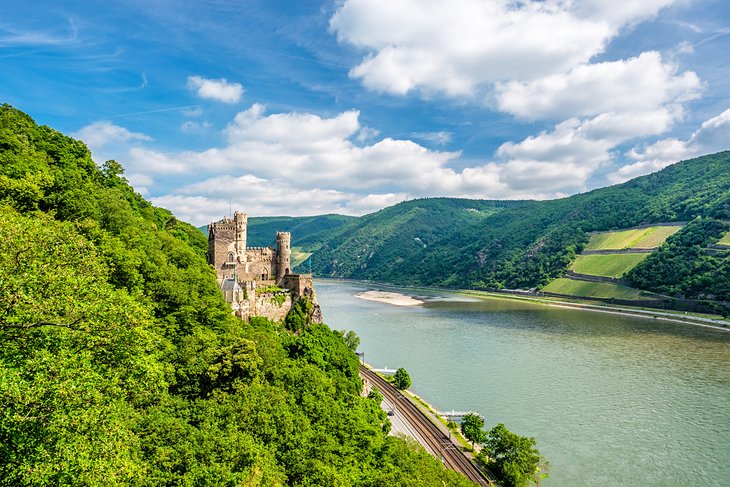
The most scenic section of the Rhine Valley, the Upper Middle Rhine Valley, often simply referred to as the Rhine Gorge, stretches for 65 kilometers from the beautiful city of Koblenz all the way to the town of Bingen am Rhein. It has been designated a World Heritage Site by UNESCO in recognition of its importance in terms of the history, geology, culture, and industry of this region of Germany.
Rich in unique flora and fauna thanks to its microclimate, it's a fascinating section of the Rhine Valley to explore. One of the best ways to experience this beautiful part of the world is to extend your visit with a stay at an authentic guesthouse or inn situated in any one of the many quaint towns and villages that cling to the riverbanks between the Rhine and the cliffs.
Notable examples of great bases from which to venture out and explore include the towns of Boppard, Lahnstein, Braubach, and Bacharach, to name but a few.
Whether you choose to see the Rhine Gorge from the comfort of a car or while cycling or walking along the banks of this mighty river, you can't fail to be impressed by its steep cliffs. The most dramatic of these is the famous Loreley Rock, a huge rocky outcrop that rises vertically to an impressive 200 meters in height.
Read More: Tourist Attractions in Germany
Take a Slow Boat along the Rhine
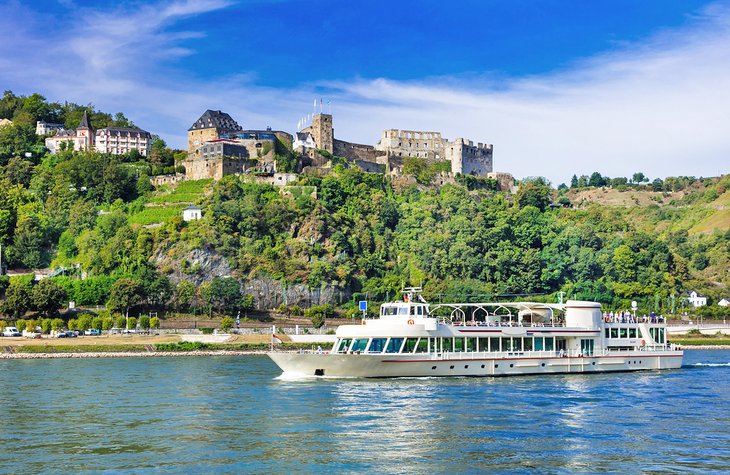
One of the best ways to see and experience the mighty Rhine River is aboard a full-day Rhine Valley river cruise from Frankfurt. Embarking in the beautiful city of Frankfurt on the Main River, this fun cruise will typically whisk you by riverboat to historic Rudesheim and Lorely, stopping for a riverside lunch along the way. Pressed for time? A half-day tour option is also available.
Visit the Many Museums of Mainz
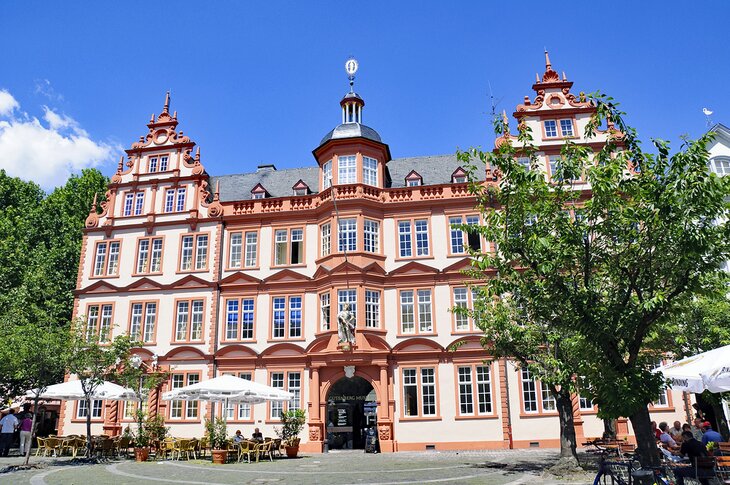
The old cathedral city of Mainz lies on the west bank of the Rhine opposite the mouth of the River Main, just 44 kilometers west of Frankfurt. Located in the midst of many of the most important Rhine Valley attractions, Mainz is an ideal location from which to explore this beautiful region of Germany.
Travel south along the Rhine and you'll hit the picturesque old towns of Worms, famous for its splendid cathedral; and Mannheim, well-known for its medieval architecture. To the north is the spectacular UNESCO World Heritage site of the Rhine Gorge, considered one of the most beautiful places to visit in Germany.
Mainz itself boasts a rich and diverse heritage that dates all the way back to Roman times. Much of this fascinating history is recorded in excellent museums such as the Roman-Germanic Central Museum (Leibniz-Zentrum für Archäologie), which maintains some of its most important artifacts in the historic Electoral Palace in Mainz.
Also important is the Museum of Ancient Seafaring (Museum für antike Schifffahrt), with its stunning full-scale replicas of Roman galleons. Another one of the highlights of Mainz is the Gutenberg Museum. This must-visit attraction features fascinating displays depicting the life and times of the inventor of the moveable metal type printing technique, who was born here in 1398.
Worms Cathedral
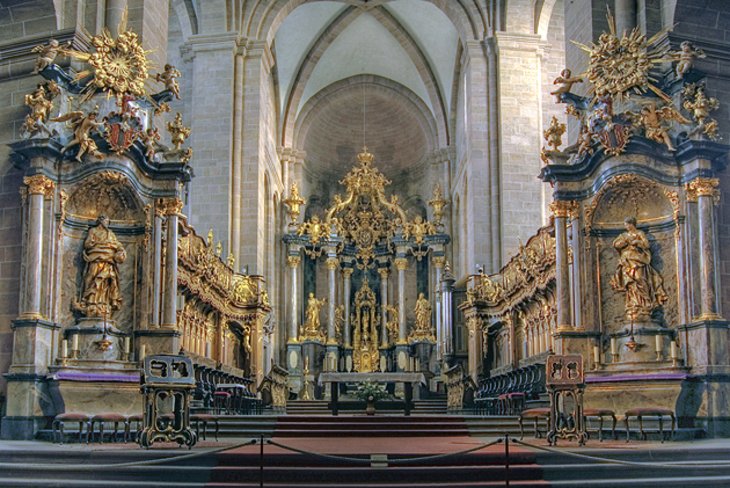
The cathedral city of Worms, located on the west bank of the Rhine, is one of the oldest towns in Germany. A highlight of a visit should be the 11th-century Cathedral of St. Peter (Wormser Dom, or Dom St. Peter).
With its four round towers and twin domes, this spectacular old building ranks, along with the cathedrals of Speyer and Mainz, as one of the finest achievements of the High Romanesque architectural style.
The cathedral's nave is particularly impressive, rising some 27 meters tall, while its domes reach heights of 40 meters. Interior highlights include five Late Gothic sandstone reliefs from the old cloister, its fine choir stalls, and a superb Baroque high altar.
Other buildings of note in Worms' Marktplatz are the early 18th-century Trinity Church, with its fine interior, and the 10th-century St. Magnus' Church.
Address: Domplatz, 67547 Worms
Explore Pedestrian-Friendly Mannheim

Thanks to its favorable location on the east bank of the Rhine, Mannheim has served as one of Europe's most important, and largest, inland harbors for centuries. It's also a relatively new city by European standards, and was laid out in the early 17th century on a grid of rectangles, much like most North American cities.
Pedestrian-friendly and fun to explore on foot, the cultural center of the city revolves around the historic Marktplatz with its Old Town Hall (Altes Rathaus) and the Lower Parish Church (Untere Pfarrkirche), erected in 1723. Also interesting is the nearby Jewish Center (Jüdisches Zentrum) with its synagogue.
Another important point of interest is Mannheim Baroque Palace. Completed in 1760 and one of the largest such palaces in Germany, this attractive old palace is a delight to explore. Highlights include the magnificent Knights' Hall and the grand Imperial Quarters, notable for their elaborate decor.
Shoppers are also well-catered to in Mannheim. The city's main shopping areas focus on the Planken and the Kurpfalzstrasse, which intersect in Paradeplatz. Be sure to spend time sightseeing around the port area, too. Here, you can pick up a fun harbor cruise and tour the historic paddle steamer, Mannheim, now a museum dedicated to the history of navigation on the Rhine.
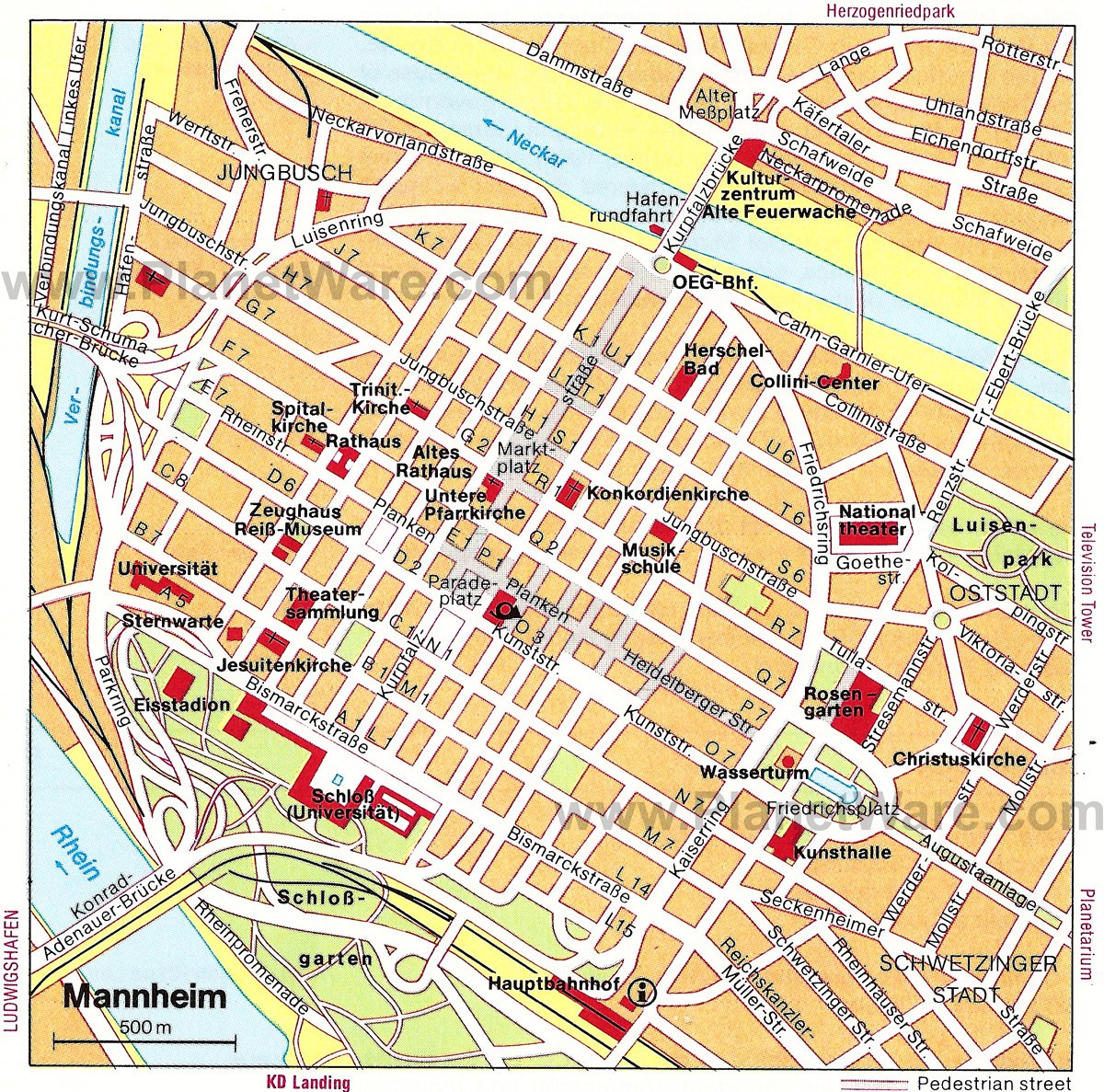
Hike or Bike the Palatinate Forest (Pfälzer Wald)
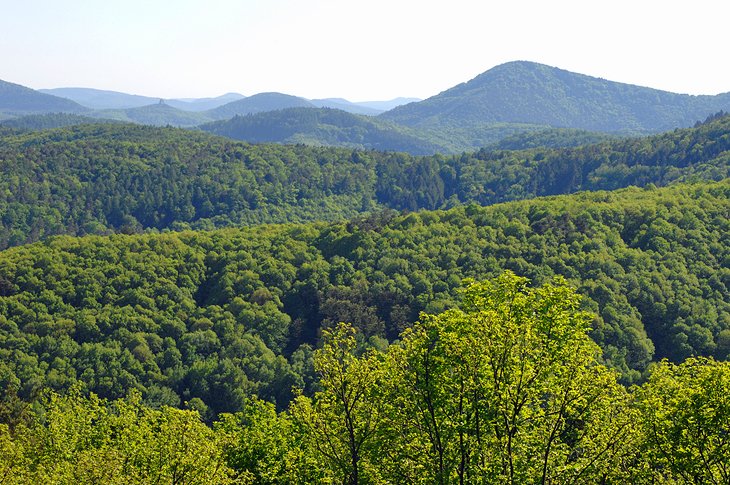
The Pfälzer Wald, or Palatinate Forest, is a heavily wooded upland region located on the left bank of the Upper Rhine. Covering an area of 1,770 square kilometers, it's one of the largest expanses of forest in Germany and completely surrounds towns such as Kaiserslautern and Pirmasens.
The hills rise very gradually from the Saar basin in the west and then fall steeply down to the Rhine plain in the east, with many of the highest peaks, such as the Kalmit at 673 meters, crowned by the ruins of old castles.
Much of the region has now been designated as a nature preserve. Known as the Palatinate Forest Nature Park (Naturpark Pfälzerwald), this area of outstanding natural beauty features many excellent trails, making it a wonderful place to spend time hiking and biking. Other popular outdoor activities and adventures to enjoy here include camping, birdwatching, ziplining, and rock climbing.
On the eastern border of the Palatinate Forest lies the little town of Wachenheim, a community that is well-known for its grape-growing traditions and old-world charm. Here, the top attractions are the ruins of the Wachtenburg Castle (Burg Wachenheim) with its spectacular views over the Rhine Valley and surrounding forests, as well as Schloss Wachenheim, dating from 1730.
Southwest of Wachenheim, the Kurpfalz-Park is a fun family-friendly amusement park that's home to an assortment of rides and attractions as well as a fun summertime toboggan run, a mountain coaster, and other fun activities. Mere minutes from Wachenheim, the spa town of Bad Durkheim is also along the grape-growing route and is famous for its curative mineral springs.
Visit an Authentic German Spa Town: Wiesbaden
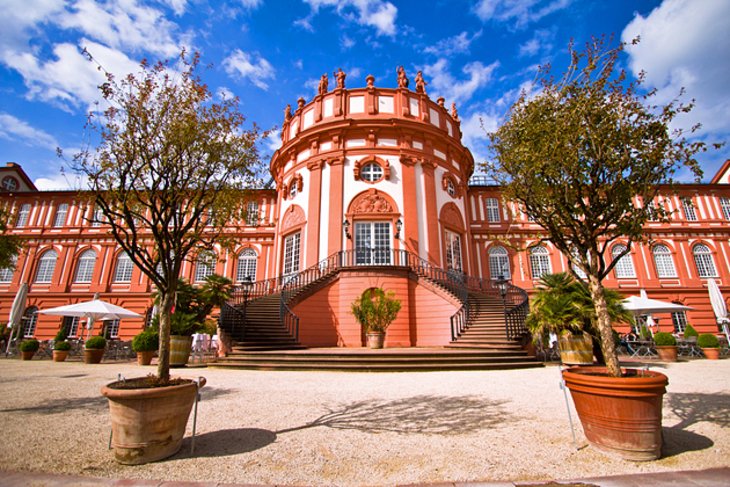
Wiesbaden, the capital of the Land of Hesse, lies at the foot of the wooded Taunus hills and is as famous for its many thermal springs as it is for its beautiful surroundings. The town's name literally translates to "meadow baths" and can trace its rich history as a spa and tourist town down the centuries.
Evidence of the importance of its spas and baths is evident everywhere, from the spectacular Fountain Colonnade in Kurbezirk to the famous Kurhaus, an imposing building built in 1907, which boasts a massive Ionic portico.
Beyond the Kurhaus is the Aukammtal spa district, with its numerous thermal baths and saunas, along with the Kochbrunnen, home to 15 springs with average temperatures of 66 degrees Celsius, and the Kaiser Friedrich Baths, dating from 1913.
Also of interest is the magnificent Biebrich Palace (Biebrich Schloss). Built between 1698-1744, this beautiful edifice is a superb example of Baroque architecture. Also notable is the Neroberg, a 245-meter-high hill with its conspicuous Greek Chapel and the Opel Baths.
Wiesbaden also offers a number of excellent accommodation options, including numerous luxury hotels and resorts, many with spas of their own. Locations such as Radisson Blu Schwarzer Bock Hotel Wiesbaden and Dorint Pallas Wiesbaden make excellent choices for those looking to extend their stay in this wonderful part of the world.
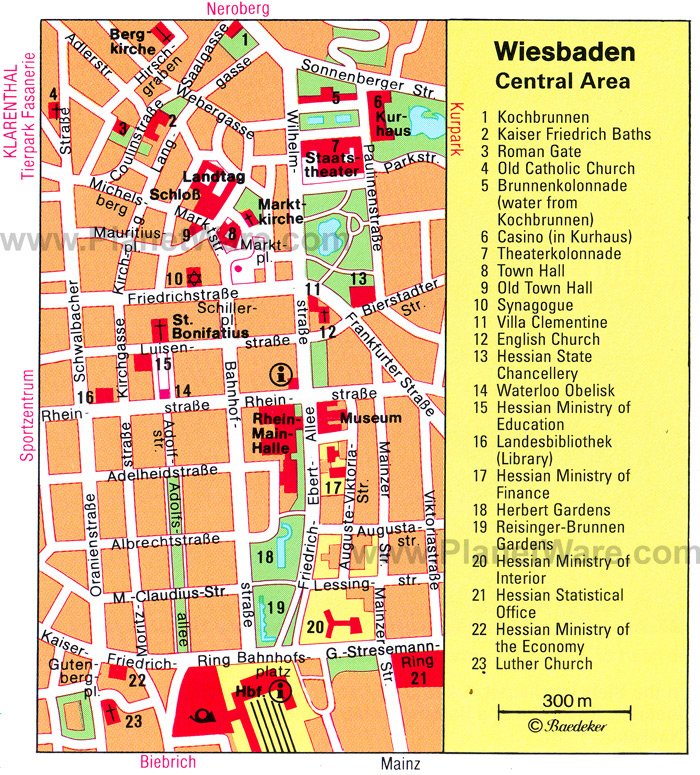
Koblenz: The German Corner
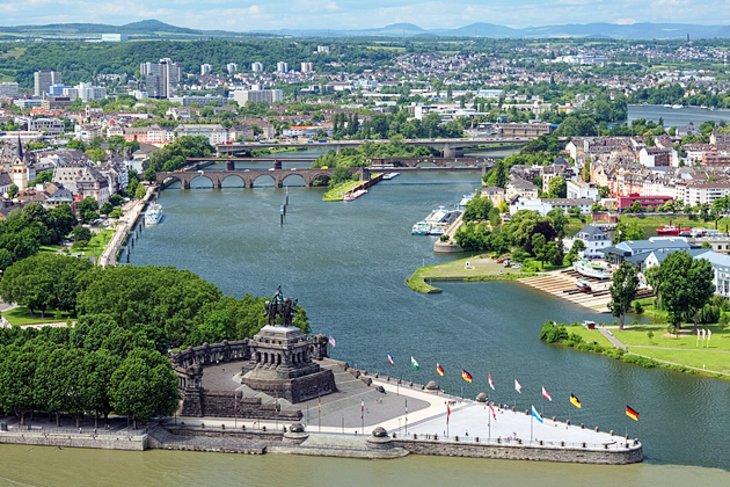
Koblenz, the former residence of the Electors of Trier, lies in a beautiful location at the junction of the Mosel and Rhine rivers. One of the best places to visit in Germany for those who appreciate historic architecture, the Old Town area boasts numerous well-preserved historic attractions, from the spectacular fortress of Ehrenbreitstein to the Neoclassical Koblenz Schloss, built in 1786 by the last Elector.
Another important fortification to explore is Stolzenfels Castle (Schloss Stolzenfels), a picturesque structure built in the 19th century just outside Koblenz that boasts an equally attractive park-like setting and gardens. Other historic highlights are St. Castor's Church, founded in 836 CE, and where the Treaty of Verdun was signed in 843 CE, which divided up the Carolingian empire.
One of the city's most famous locations, however, is the German Corner, or Deutsches Eck, the narrow tongue of land between the Rhine and the Mosel. Watching these two mighty rivers converge here is a truly inspiring sight, one that's marked appropriately by the Monument to German Unity.
Other interesting things to do in Koblenz include paying a visit to the Deutschherrenhaus, the remains of a castle of the Teutonic Order. This impressive fortification also serves as a popular spot during the summer for its evening music concerts.
Also fun is taking the new Koblenz cable car (Seilbahn Koblenz). Opened in 2010, this first-rate cable car experience travels between the river and Ehrenbreitstein castle, with plenty of great views to enjoy along the way.
Braubach and Marksburg Castle
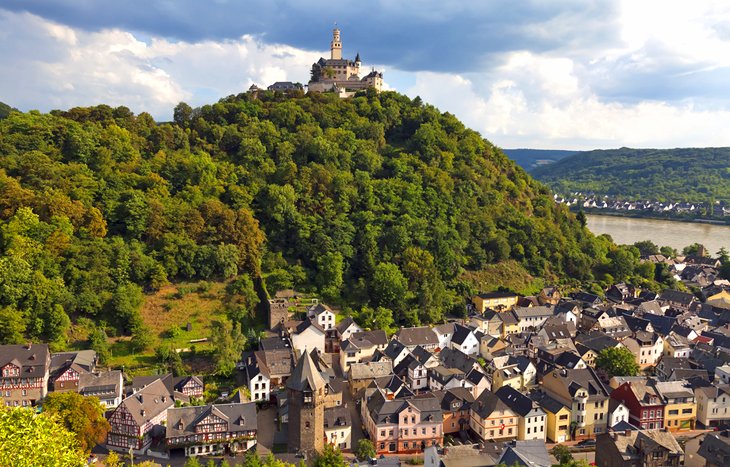
Located in the heart of the UNESCO World Heritage section of the Rhine Valley, the picturesque old town of Braubach, on the east bank of the river, is the most northerly of the region's many pretty towns. With its wonderfully crooked old streets and alleyways lined with their medieval half-timbered buildings, it's a delightful place to explore on foot.
Other highlights include the 13th-century Barbarakirche church, the 11th-century Martinskapelle chapel, as well as surviving sections of the Old Town walls.
At the center of the town, perched high atop a hill that towers over the surrounding area, sits Marksburg Castle (Schloss Marksburg). Built in 1117, it has the distinction of being the only hilltop fortress in the Rhine Valley to have survived intact, and is widely regarded as one of the most important castles in Germany.
You can easily spend hours exploring the castle and its grounds, highlights of which include its four-story chapel tower, the great hall, and batteries of old cannons. Of special interest is the castle's splendid interior, which can be enjoyed as part of a 50-minute guided tour (English language tours are available). There's also an on-site gift shop, and fun medieval-themed dining is offered close by.
Address: 56338 Braubach
Boppard's Roman Legacy
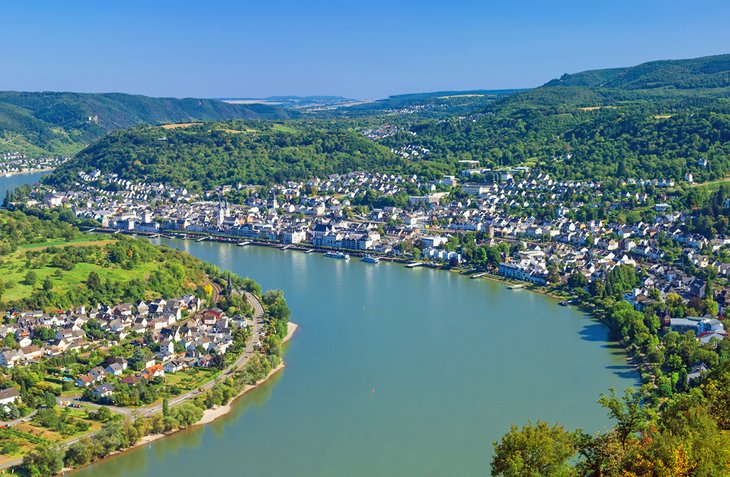
The Rhine's importance to the Romans is nowhere more evident than in the charming town of Boppard. It was here, some 2,000 years ago, that they set up a fortress to guard the river. Evidence of this and later Roman fortifications can still be seen in the Roman Fort, or castrum, widely considered one of the best-preserved late-antiquity fortresses in Europe.
Highlights of this 4th-century site are the remains of its 28 semi-circular towers, as well as the large sections of old wall that rise in places as high as nine meters. In its heyday, this once-massive structure covered an area of 12 acres. Not only can you wander this ancient fortress, you can also view important relics from its excavation in the town's museum.
The town's first Christian church was also built here, a site now occupied by the late Romanesque St. Severus Church. Another old building to visit is the 15th-century Ritter-Schwalbach-Haus, the former home of members of the town's aristocracy.
Boppard is also a popular getaway destination for those who like to shop, and also offers a good selection of hotels for those wanting to extend their stay. Popular options include the 4-star riverside Bellevue Rheinhotel, as well as Das Ebertor, a hotel and hostel that's popular for those on a tight budget.
It's also a popular spot for those looking to enjoy a good meal. One of the most popular Boppard restaurants is GedeonsEck (or Gedeon's Corner), named after the 240-meter-tall hill on which it's perched.
And, getting there is half the fun. Most visitors choose to arrive via the 20-minute ride aboard the Sesselbahn Boppard chairlift. This gives you the chance to save your energy and linger a while after dining to enjoy the panoramic views over the largest bend in the Rhine river.
